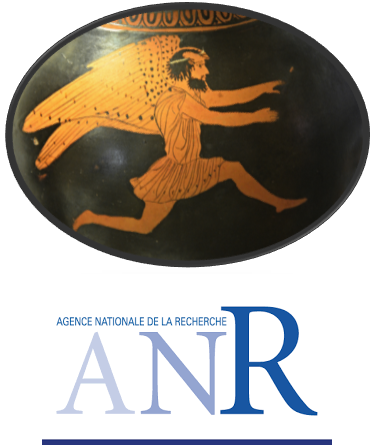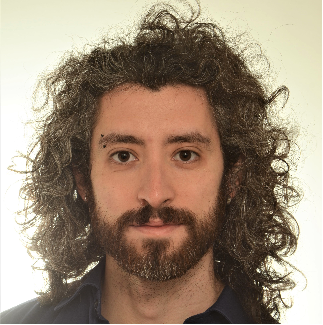
Boreas (Greek god of the north wind and winter), Athenian red-figure pelike 440-430 BC, Cabinet des médailles, Paris
BOREAS
Bridging dynamic and thermOdynamical REsponse of coldspells of Anthropogenic forcing using Statistical mechanics
BOREAS is a T-ERC ANR founded project.
BOREAS assesses how climate change modify the frequency and intensity of snowstorms affecting European large populated areas in winter time. Anthropogenic emissions are responsible for temperature increase. Nonetheless, we still observe winter snowstorms that cause casualties, transport disruptions as well as energy supply problems. In some European regions, increasing decadal trends in maximum yearly snowfall are observed. This apparent contradiction comes from the subtle effects of climate change on extreme events driven by the atmospheric circulation. Indeed, snowstorms are associated to extratropical cyclones which propagate in a southward– rather than eastward- direction as a result of the meandering of the mid-latitude jet-stream. In the present climate, the combination of higher surface winter temperatures with the advection of lower atmospheric cold air associated with those extratropical cyclones enhances evaporation and convective precipitations, often leading to more
intense snowstorms than in the past. In a future climate it is unclear whether the effect of temperature increase will prevail on that of potential changes in the jet stream and convective feedback. BOREAS will clarify this by: 1) Tracking the changes in jet meandering amplitude in future emissions scenarios by projecting the jet dynamics in CMIP6 simulations on a subset of instantaneous indicators that track waviness, predictability and persistence of circulation patterns. This will assess the abundance of weather patterns possibly leading to snowstorms in the future. 2) Evaluating the capability of local convective feedback to enhance snowfalls despite increasing temperatures via a storyline approach based on simulations of past & present snowstorms with convection- permitting models, forced with future boundary conditions (e.g. higher sea-surface temperatures, different land-use & vegetation). Simulations will provide a comprehensive overview on future European snowstorms

Paris druing the snowstorms 8th-9th Feb. 2018
TEAM
Davide Faranda (Principal Investigator)
I am a CNRS (permanent) Researcher in Complex Systems at the LSCE laboratory of the University of Paris-Saclay, in the ESTIMR group. Since September 2017, I am also external fellow of the London Mathematical Laboratory, London, United Kingdom and of the Laboratoire de Meteorologie Dynamique de l'Ecole Normale Superieure in Paris.
Flavio Pons (Post-doctoral Researcher)
I am a CNRS post-doctoral researcher in climatology in the ESTIMR team at LSCE (University of Paris-Saclay). I hold a MSc in atmospheric physics and a Ph.D. in Statistics. My previous experience includes three years as a post-doctoral researcher in economic statistics and one year and a half working on the Copernicus Climate Change Service for Energy.
OBJECTIVES AND TASKS
Task 1: Analysis and Dynamics of present & past snowstorms in France
Objective: construct a database of French past snowstorms using documentary sources starting from 1900 (newspapers, pictures, books). We will assess the large & small scale dynamical properties of snowstorms using the methods outlined in D’Errico et al. [2020].
Description of Methods: BOREAS-TERC will start snowstorm reconstruction from documentary sources and data available from MeteoFrance and counter-check data validity with existing databases of snow events from other projects such as ACRE, the Snows of Yesteryears, CLIWOC
Deliverables: Database of snowstorms for different regions (D1.1). Scientific publication (e.g. Nature Data) (D1.2).
Risk: risks are linked to i) the availability of sources in the far past and ii) problems related to data homogenization. Risks for assessing the dynamics of snowstorms are low as methods have been already applied in D’Errico et al. [2020] for PlaSim simulations.
Back-up plans: i) focus on shorter time-scales (e.g. 1948 or 1979 to present), ii) restrict the reconstruction to datasets where continuous and homogeneous observations are available.
Task 2: Change in snowstorm frequency in CMIP6 emission scenarios
Objective: assess the change in frequency of occurrence of future snowstorms in CMIP6 emission scenarios by evaluating the modifications in the tracks of extratropical cyclones travelling to mid-latitudes in wintertime.
Description of Methods: Extratropical cyclones are embedded in jet-stream flow. We will combine the indicators of the dynamics of mid-latitude flow developed in Faranda et al. [2019, Nature Comm.] with the tracking and the modelling of the jet-dynamics in Faranda et al. [2019, ESD] to follow the jet during winter snowstorm.
Deliverables: scientific publication (D2).
Risk: risks are linked to the detectability of changes in the jet dynamics in CMIP6 emission scenarios, due to the interplay between non-stationarity of the mid-latitude flow due to its chaotic and complex nature.
Back-up plans: Complete the analysis of CMIP6 scenarios with that of AMIP forced simulations. The latter have the advantage of using stationary forcing and magnify the changes in the dynamics.
|
ANR BOREAS-TERC |
Year 1 |
Year 2 |
||||||||
|
Task 1 |
Analysis and Dynamics of present & past snowstorms in France |
|
|
D1.1 |
|
|
D1.2 |
|
|
|
|
Task 2 |
Change in snowstorm frequency in CMIP6 emission scenarios |
|
|
|
|
|
|
|
D2 |
|
|
DFaranda |
Flavio Pons |
|||||||||








